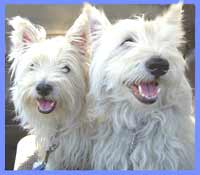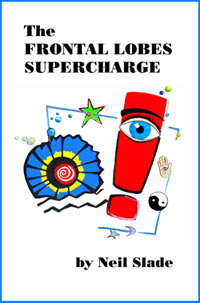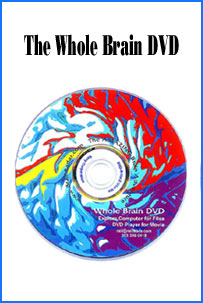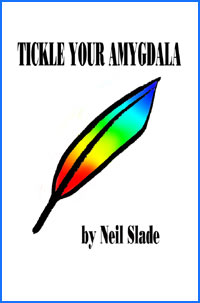Scientific References
on
Brain Function and
Potential
Not infrequently, visitors to this web site
wonder if the claims made at this site are truly genuine.
They are. Brain and behavior researcher T.D.A. Lingo may
have been quite a character, but often eccentric genius
type scientists are. He attended four universities, with
his final Ph.D. work at the University of Chicago,
followed by intense research and development at his own
facility for 35 years. Below, you will find scientific
journal and medical foundation findings and references
cited by Lingo in his 1981 report on releasing frontal
lobes potential (published with annotations as Cosmic
Conversations. Any person wanting to substantiate the
scientific and medical background and basis for this
brain work may investigate these reliable sources at any
good medical or university library.
REFERENCES:
Note: A simple and less
technical (but very interesting) and easy to find book
with some references to amygdala and triune brain
function is "The Three Pound Universe" by Dick Teresi and
Judith Hooper, available at many public
libraries.
Adamec, R.
Behavioral and epileptic determinants of predatory attack
behavior in the cat. In: J. A. Wada
(Ed.).
Kindling, New
York: Raven Press, 1976, 135-154.
Alonso-deFlorida, F. and Delgado, J. M. R.
Lasting behavioral and EEG changes in cats induced by
prolonged
stimulation
of amygdala, American Journal of Physiology, 1958, 193:
223-229.
Bucke, R. M.
Cosmic Consciousness. Secaucus, N. J.: Citadel Press,
1973.
Campbell, H.
J. The Pleasure Areas, A New Theory of Behavior. New
York: Delacorte Press, 1973, pp.
114-116.
Eccles, J. C.
Lecture, University of Colorado, University Memorial
Center, Boulder, July 31, 1974.
Gaito, J. The
kindling effect as a model of epilepsy. Psychological
Bulletin, 1975, 83 (6): 1097-1109.
Glueck, B. C.
and Stroebel, C. F. Biofeedback and meditation in the
treatment of psychiatric illness.
Comprehensive
Psychiatry, 1975, 16 (4): 303-321.
Goddard, G.
V., McIntyre, D.C. and Leech, C. K. permanent change in
brain function resulting from daily
electrical
stimulation. Experimental neurology, 1969, 25:
295-330.
-----. Long
term alteration following amygdaloid stimulation. In: B.
E. Eleftherion (Ed.), The Neurobiology of
the
Amygdala. New
York: Plenum Press, 1972, pp 582-583.
-----.
McNaughton, B. L., Douglas, R. M. and Barnes, C. A.
Synaptic change in the limbic system: evidence
from
studies using
electrical stimulation with and without seizure
activity.
-----. In: K.
E. Livingston and 0. Hornykiewicz (Eds.), Limbic
Mechanisms: The Continuing Evolution of the
Limbic
System
Concept. New York: Plenum Press, 1976.
Gowan, J. C,
Altered states of consciousness: a taxonomy. Journal of
Altered States of Consciousness,
1978-1979,
4 (2):
141-156.
Greeley, A.
M. Ecstasy: Way of Knowing. Englewood Cliffs, N. J.:
Prentice-Hall,1974.
Gunne, L. M.
and Reis, D, J. Changes in brain catecholamines
associated with electrical stimulation of
amygdaloid
nucleus. Life
Sciences,1963, 11: 804-812.
Heath, R. G.,
Monroe, R. R. and Mickle, W. A. Stimulation of the
amygdaloid nucleus in a schizophrenic
patient.
American
Journal of Psychiatry,1955, 111:
862-863.
Heisenberg,
W. Physics and Beyond, New York: Harper and Row,
1972.
Janov, A. The
Primal Scream. New York: Dell, 1970.
-----.
Prisoners of Pain, Garden City, N. Y.: Anchor
Press/Doubleday, 1980.
Karenga, M.
R. Chinese psycho social therapy: a strategic model for
mental health. Psychotherapy, Theory,
Research and
Practice, 1978, 15 (1): 101-107.
Krishna, G.
Higher Consciousness. New York: Julian Press,
1974.
Kuhn, T. S,
The Structure of Scientific Revolutions. Chicago:
University of Chicago Press, 1970.
<P>
Livanov, II.
N., Garilova, N. A. and Aslanov, A. S. Correlations of
biopotentials in the frontal parts of the
human
brain. In: K.
H. Pribram and A. R. Luria (Eds.). Psychophysiology of
the Frontal Lobes. New York and London:
Academic
Press, 1973.
Livingston,
K. E. and Hornykiewicz, 0. (Eds.), Limbic Mechanisms: The
Continuing Evolution of the Limbic
System
Concept, New
York: Plenum Press, 1976.
Luria, A. R.
Frontal lobes and the regulation of behavior. In: K. H.
Pribram and A. R. Luria (Eds.).
Psychophysiology of the Frontal Lobes. New York
and London: Academic Press, 1973.
MacLean, P.
D. On the evolution of the three mentalities. Man-
Environment Systems, 1975, 5: 213-224.
-----. In: M.
Pines, "Good Samaritans at Age Two?," Psychology Today,
June, 1979.
Maslow, A. H.
In: M. Hardeman, "A Dialogue with Abraham Maslow,"
Journal of Humanistic Psychology, 1979,
19 (1):
23-28.
Moorman, L.
J. Tuberculosis and Genius, Chicago: University of
Chicago Press, 1945.
Moreno, J. L.
Foundations of Psychotherapy. Beacon, N. Y.: Beacon
House, 1959.
-----.
Action-Therapy and Principles of Practice, Beacon, N. Y,:
Beacon House, 1969.
-----.
Collected Papers, Beacon, N. Y.: Beacon House, 1972.
<P>
O'Keefe, J.
Place units in the hippocamnus of the freely moving rat,
Experimental Neurology,1976, 51:
78-109.
Olds, J. and
Milner, P. Positive reinforcement produced by electrical
stimulation of septal area and other
regions
of rat brain.
Journal of Comparative and Physiological Psychology, 1954
47: 419-427.
-----. Reward
from brain stimulation in the rat. Science, 1955, 22:
878.
-----. A
preliminary mapping of electrical reinforcing effects in
the rat brain. Journal of Comparative
and
Physiological
Psychology, 1956, 49: 281-285.
Penfield, W.
and Roberts, L. Speech and Brain Mechanisms, Princeton:
Princeton University Press, 1959.
-----. and
Mathieson, G. Memory: autopsy findings and comments on
the role of hippocampus in experiential
recall.
Archives of Neurology, 1974, 31:
145-154.
Popper, K.
Objective Knowledge, Oxford: Oxford University Press,
1972.
Pribram, K.
Psychology Today, February, 1979.
Pryse-Phillips, W. Epilepsy, Bristol: John Wright
and Sons, 1969.
Reis, D. J.
and Gunne, L. M. Brain catecholamines: relation
to
the defense
reaction evoked by amygdaloid stimulation in cat.
Science, 1965, 149: 450-452.
Tower, D. B.
Neurochemistry of Epilepsy. Springfield, Illinois:
Charles C. Thomas, 1960.
Wada, J. A.
The clinical relevance of kindling: species, brain sites
and seizure susceptibility. In: K. E.
Livingston
and 0.
Hornykiewicz (Eds.). Limbic Mechanisms: The Continuing
Evolution of the Limbic System Concept.
New
York: Plenum
Press, 1976.
Walter, G.
Human frontal lobes function in sensory-motor
association. In: K. H. Pribram, and A. R. Luria
(Eds.),
Psychophysiology of the Frontal Lobes New York
and London: Academic Press, 1973.
Wislon, E.O.
Sociobiology: The New Synthesis. Cambridge,
Massachusetts: Belknap Press of Harvard
University
Press,
1975.
----. On
Human Nature. Cambridge, Massachusetts: Harvard
University Press, 1978.
Wooldridge,
D. E. The Machinery of the Brain, New
York:
McGraw Hill,
1963.
Wurtz, R. H.
and Olds, J. Amygdaloid stimulation and operant
reinforcement in the rat. Journal of
Comparative
and
Physiological Psychology, 1963, 56:
941.
Yoshii, N.
and Yamaguchi, Y. Conditioning of seizure discharges with
electrical stimulation of the limbic
structures
in cats.
Folia Psychiatrica et Neurologica Japonica, Niigata,
Japan, 1963, 17: 276-281.
Back to
The
Library From Another Dimension
Back
to The Amazing Brain Music
Adventure
|
 Chloe
and Erfie
Chloe
and Erfie![]()


